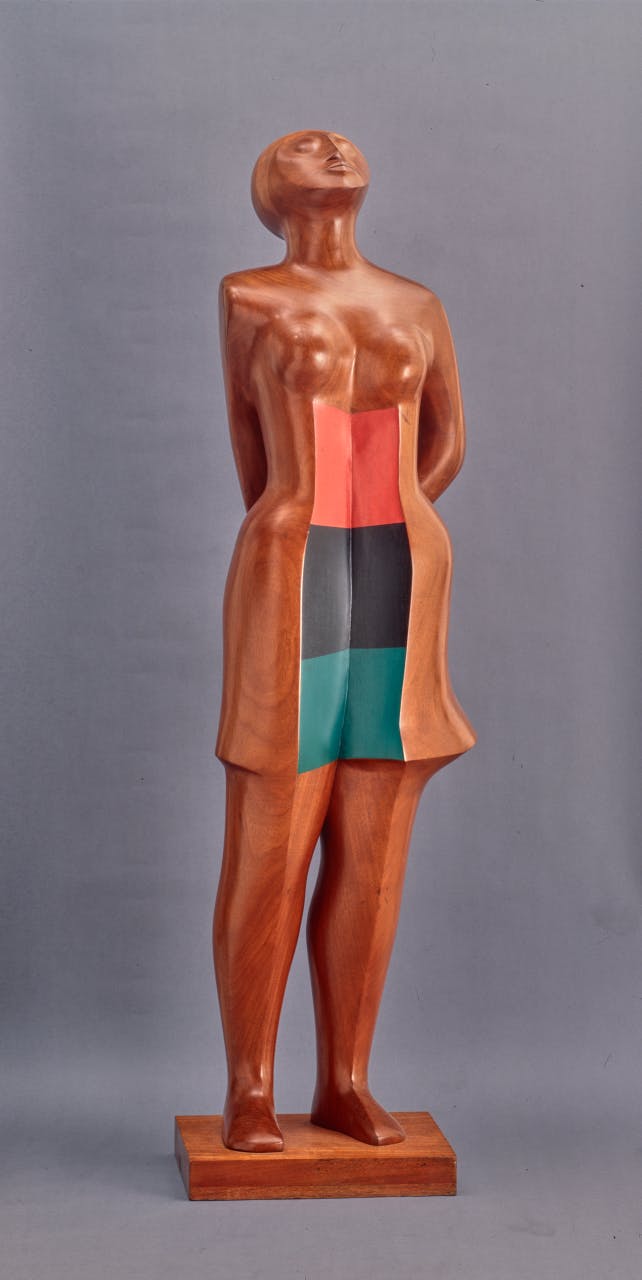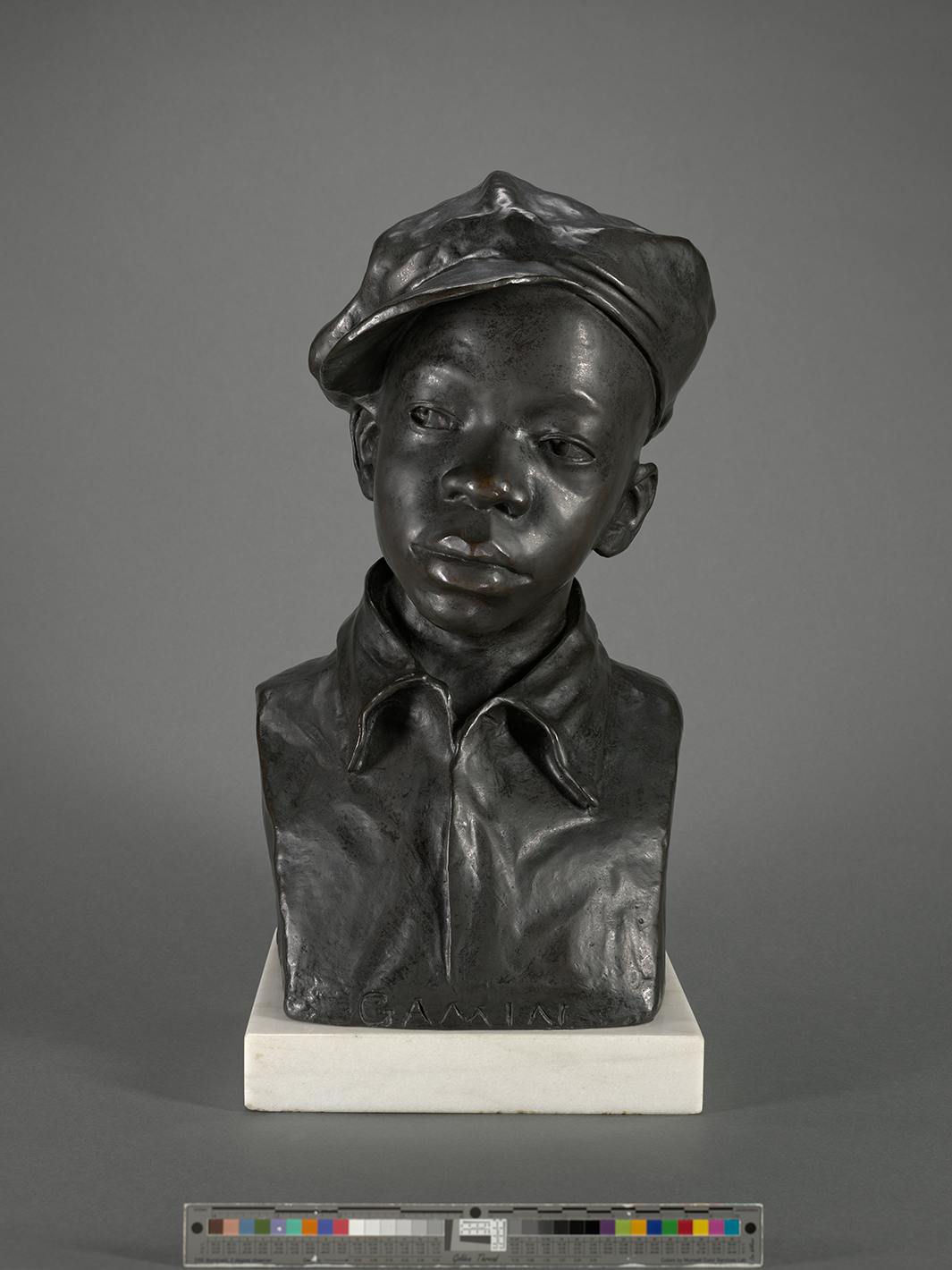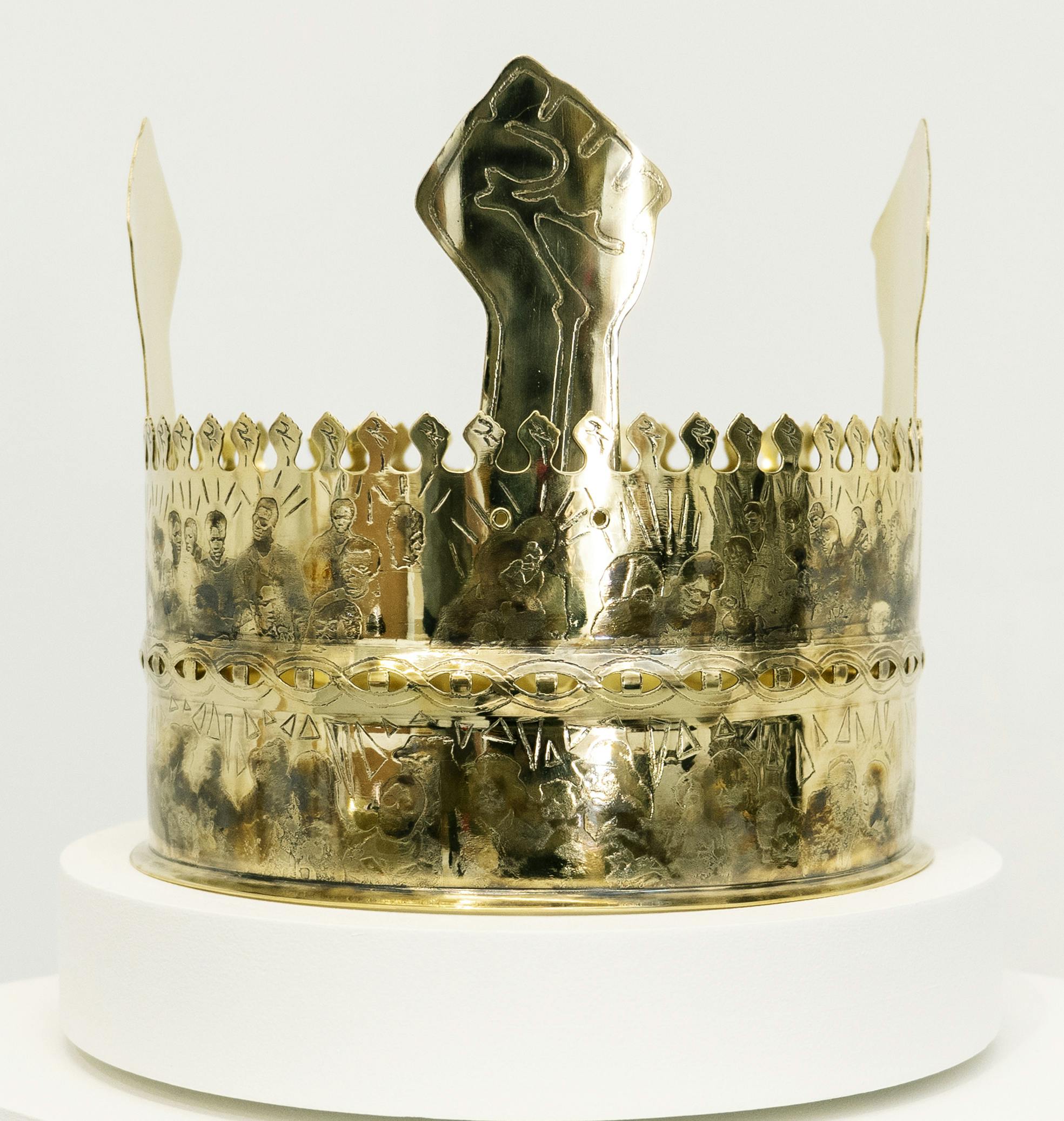Celebrating One Hundred Years of Art at the Schomburg

Elizabeth Catlett, Political Prisoner, 1971. Polychromed cedar. Art and Artifacts Division, Schomburg Center for Research in Black Culture. Elizabeth Catlett, © 2025 Mora-Catlett Family / Licensed by VAGA at Artists Rights Society (ARS), NY

Elizabeth Catlett, Political Prisoner, 1971. Polychromed cedar. Art and Artifacts Division, Schomburg Center for Research in Black Culture. Elizabeth Catlett, © 2025 Mora-Catlett Family / Licensed by VAGA at Artists Rights Society (ARS), NY
Tammi Lawson, Curator of the Art & Artifacts Division at the New York Public Library’s Schomburg Center for Research in Black Culture, discusses a few items from the renowned collection of this library as it celebrates its centennial year.
The Schomburg Center for Research in Black Culture is unique within the New York Public Library system. We collect paintings, sculptures, drawings, fine art prints, as well as ephemeral and material culture items focused on African American, African Diasporic, and African experiences. We have fifteen thousand pieces in our collection in the Art and Artifacts Division. Right now, Elizabeth Catlett’s Political Prisoner (1971) is speaking to me. The work has a lot of symbolism and speaks to the fortitude of Black women. I like that Catlett painted the red, black, and green in her guts. I like to say: “It’s in her.” That is a strong statement. Of course, her hands are shackled at the back. So, in the front, she looks confident and strong, yet she is shackled. That’s partially the story of Black women’s life in this country, it seems.
I also love Augusta Savage’s Gamin (1929), a sculpture of the artist’s nephew. I love that the little boy has strong African features. He’s not what was popular in a lot of portraits at the time: mulattos, octoroons, quadroons. You did have, of course, imagery of Black people, but they were in the fields. He’s just a little boy, and he’s beautiful. It won her a Rosenwald Fellowship to study in Paris.


Augusta Savage, Gamin, 1929. Bronze. Gift of Works Progress Administration. Courtesy Schomburg Center for Research in Black Culture, Art and Artifacts Division, The New York Public Library
I actively solicit artists to send me material they want to make known about themselves to include in our artists’ files. It’s a treasure trove of information!
I have Savage’s letters, and you can see how she struggled. When I first came to The Schomburg in 1989, they had just exhibited a major retrospective of her work. Deirdre Bibby was the curator; she used to work at the Studio Museum in Harlem. Savage was from the South. She was the seventh child of fourteen children. And she still said, “I’m going to New York to be an artist.”
The collection, until recently, has been acquired mostly by donations, and I do get good donations. Thank God for Joy Bivins, our current Director, who understands what I am trying to do, who is a womanist, and who gave me a budget. So, in the last three or four years I’ve been able to fill a gap in the collection by acquiring artwork by Black women artists. I was able to acquire Helina Metaferia’s Crown (After Empress Menen) (2022). It’s a brass work with three Black Power fists along the top. She etched in a scene of the Boston Blue Hill Avenue marches. From what I understand, these marches in 1968 were the first time northern Black people participated in an organized civil rights march. Metaferia is highlighting women in these movements. A lot of times the men are the figurehead of movements. But the women are the ones organizing, doing a lot of the work. That also was the case in the seventies with the Black Arts Movement and Faith Ringgold and Dindga McCannon with their collective Where We At. They protested with everyone else, but the men would get the shows and their work would enter these museum collections. Meanwhile, the women were doing all this activist and organizing work while creating art. So, I think Metaferia’s “Crowns” series speaks to that.
The Schomburg is also a community archive. While we do have, of course, the big collections—Maya Angelou, Malcolm X, Lorraine Hansberry, Harry Belafonte, James Baldwin—the bulk of the collection is from the community, and that’s the important work. We have so many activists’ papers, such as Larry Neal’s papers; we have church records; we have bank records; we have benevolent society records. So many things that substantiate other things. The bulk of our collections are not high marquee. We have over four hundred artists’ files in our collection that include secondary and primary information about artists that you will not find online, on a resume, or in books. I actively solicit artists to send me material they want to make known about themselves to include in our artists’ files. It’s a treasure trove of information! Although we have a fifty-year jump on most collecting institutions collecting Black art, the big names weren’t big names when we got them. We have several paintings by a very young Jacob Lawrence, because he was here working, being taught by Augusta Savage, and all that interconnected community work that was being done during the Harlem Renaissance and the WPA years took place here at the 135th Street branch library.
As a librarian and a curator, and because it’s the New York Public Library, I talk to everybody. For example, in 2014, this man from the South Bronx called me and he said, “When I was a kid, I used to come to The Schomburg, and my father was in the service where he met all these artists; do you want this work?” I said, “Well, what you got?” He said, “I got paintings by Jacob Lawrence, Hale Woodruff, and Eldzier Cortor.” I said, “What’s your address?” And guess what? He gave me a 1942 painting that Jacob Lawrence probably took out of “The Migration Series.” It’s of a woman sitting in a waiting area of a bus or train station.
I knew Eldzier and we talked on the phone a lot. So, I said, “Eldzier, I just got a work of yours from this guy in the South Bronx.” He said, “It’s probably a fake.” We also exchanged Christmas cards, and he had very distinctive handwriting, very big, very neat, so I told him I was looking at the signature, and I said, “It’s yours.” He asked me where I got it from, and I mentioned the donor’s name. He said, “It’s mine.” Cortor also gave me a photograph of a stairwell taken while he was on a Guggenheim Fellowship in Haiti that the painting is based on.
I think we’re the only institution that has the entire run of Green Books. I knew the Green Book publisher, Langley Waller. When I met him, he was like ninety-five, ninety-six years old. He called me to ask a question. Because I worked alone, I would put people on speaker and do my work. So, he started telling me all these stories. He told me that he had the Green Books, and he donated them to The Schomburg, and now they are all digitized. He grew up in Chicago in Bronzeville. His parents were members of the Universal Negro Improvement Association (UNIA). They went back to Africa. They said that Marcus Garvey took too long.
I’m in conversation with all sorts of people all the time—scholars, teachers, students, the curious, artists. They understand the work that I do, making information and collections, our culture, available to them. Artists and collectors want their work, their collections cared for and shared. They offer their work, and I gladly accept. You want it? I’m like, yeah, I want it. Bring it up. The community loves the Schomburg Center because we make the collection accessible to whoever wants to see it. That’s the democracy of libraries. You could be little Tamika from the projects doing a paper and want to see Romare Bearden. I’m taking it out for you.


Helina Metaferia, Crown (After Empress Menen), 2022. Brass sculpture with etching, 12 1/4 × 7 3/4 × 7 3/4 in. Courtesy the artist

